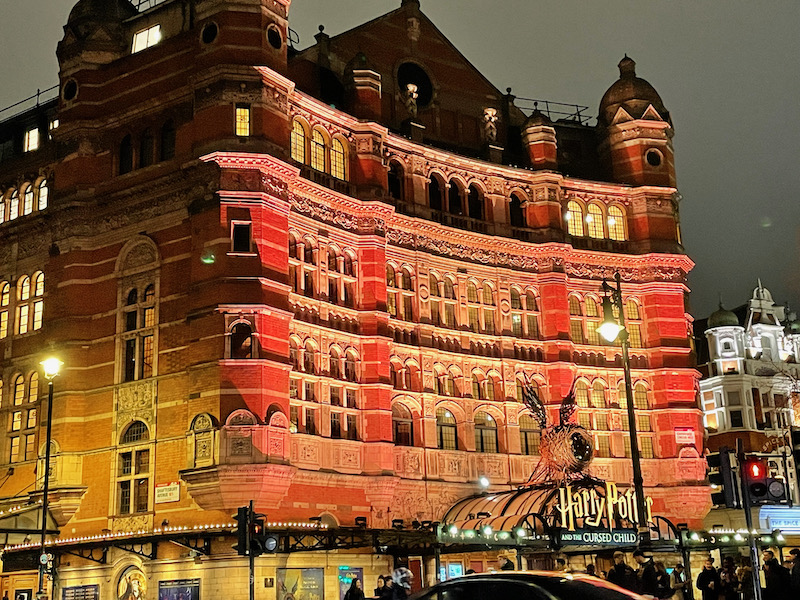Our Blog - London, UK - Day 2
I mentioned in Day 1 that the City of Westminster has several different areas, including Soho, which has been one of the main entertainment districts in London since the 19th century. The tour guide asked about other Soho areas (like NY) and how the name came about (it isn't quite as obvious as NY being SOuth of HOuston). In the 1500's, King Henry VIII took the farmland here to be a royal park. One legend says that when it was farmland, hunting parties were held here for various birds, and the hunters who say "SO HO" as a hunting cry. No idea if that is actually true or not. It moved from being an aristocratic area to a pretty seedy area by the 19th century as the aristocrats moved to more fashionable areas and prostitutes moved in.
Then in the 20th century, it started coming back with theaters, restaurants, and residential housing. We started our walk in Leicester Square, which was originally a high-rent area, which you can see from the large buildings surrounding the square. It is known for movies and the cinemas on the square (like the Odeon) are often used for film premieres.
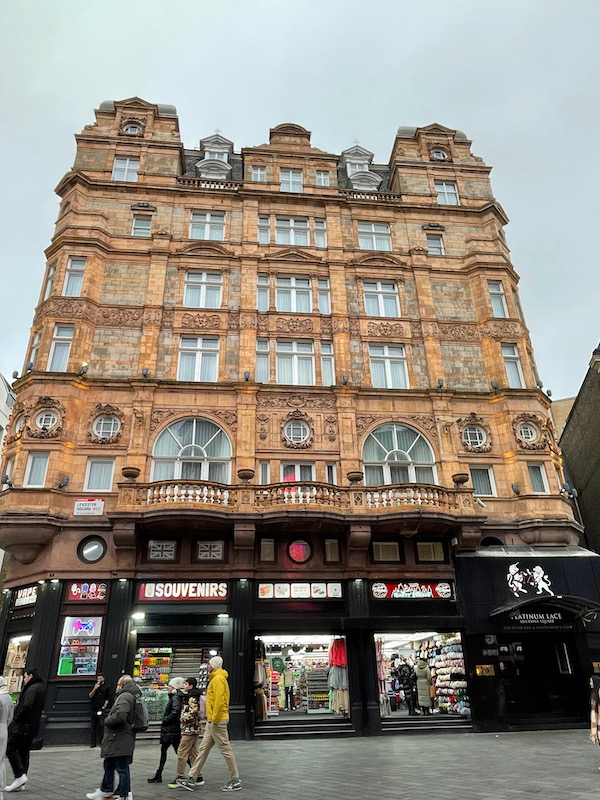
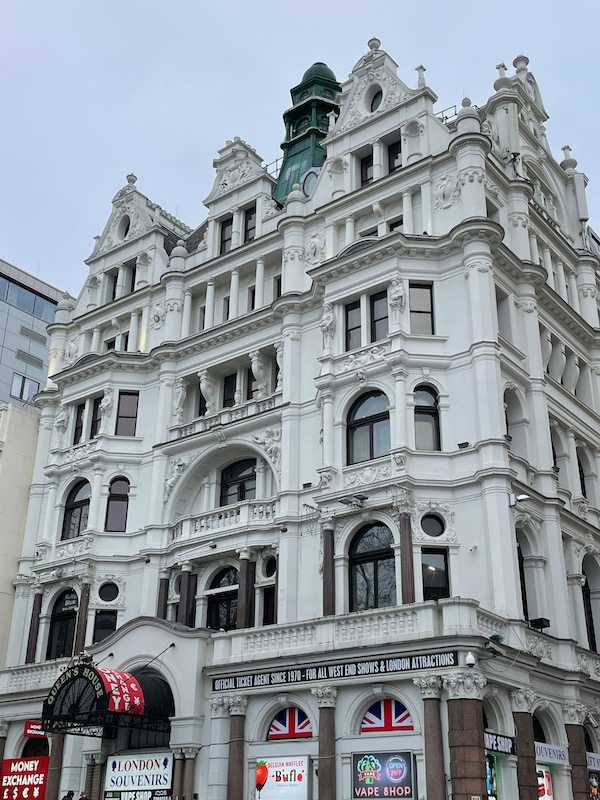
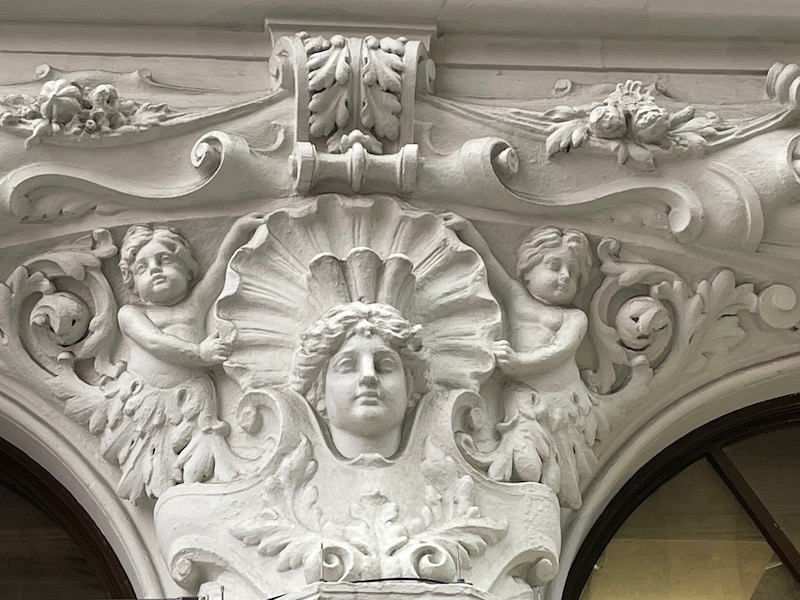
If you look closely, you can see the statue of Batman on the top of the Odeon theater. This is part of a film-themed sculpture trail called "Scenes in the Square". The first 8 statues were installed in 2020 to emphasize the Square's association with cinema. A few new sculptures have been added, including Harry Potter and the Iron Throne from Game of Thrones.
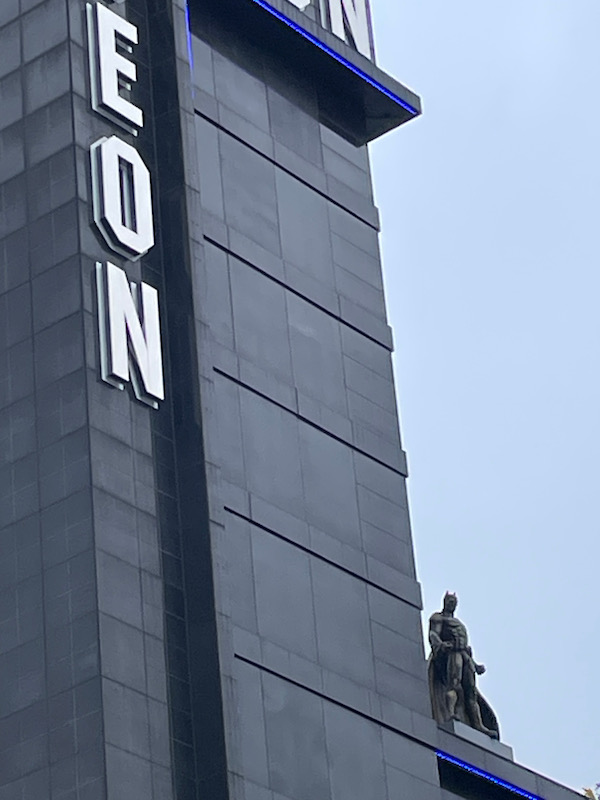
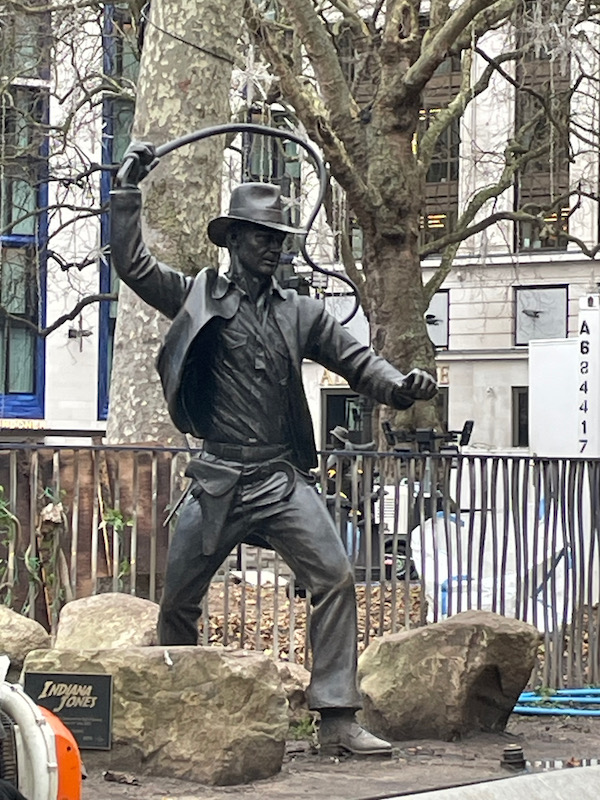
London's Chinatown is also within the Soho district. Interestingly enough, this is not the original Chinatown in London which was in the East End in Limehouse. The present Chinatown location was established in the 1970's after the previous Chinatown was destroyed in World War II, an influx of Chinese immigrants, and a need to revitalize this area, which had become run down.
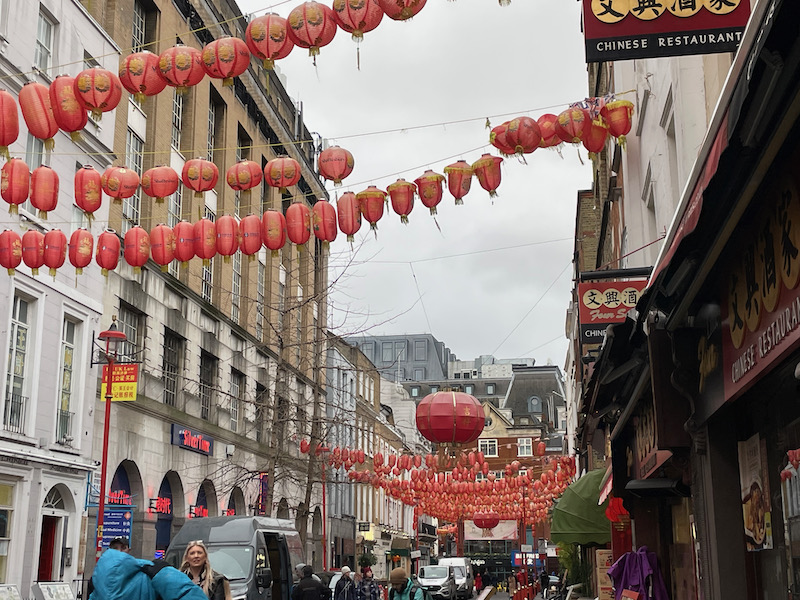

This is the Admiral Duncan pub, which is known as one of Soho's oldest gay pubs. It has a few interesting notes in its' history ... In 1953, Dylan Thomas lost the only hand-written copy of his famous radio drama Under Milk Wood in the pub, leaving it there during the course of a drinking binge (it was returned to him) ... it was bombed in 1999 by a Neo-Nazi intended to stir up ethnic and homophobic tensions (it was one of 3 bombs).

And a picture of one of the streets, just really to show the architecture.
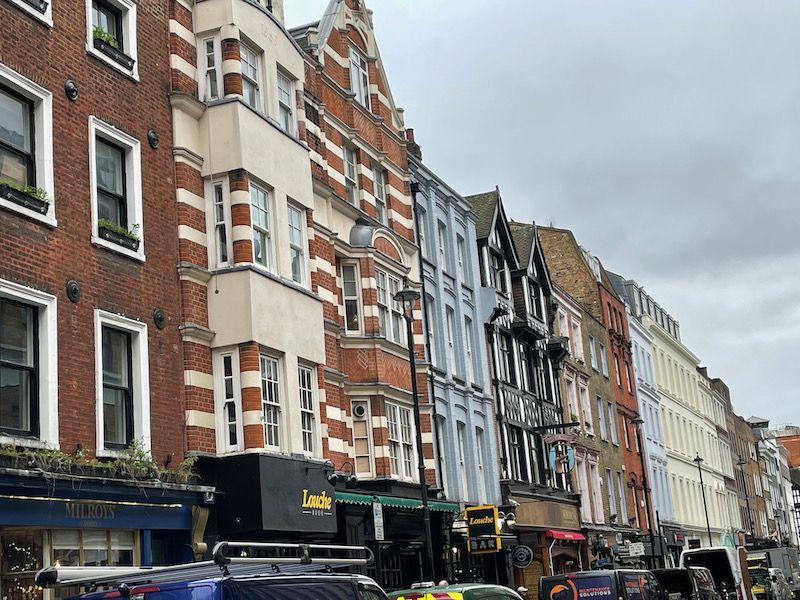
This lovely Georgian townhouse dates back to 1718, and is named after essayist William Hazlitt, who died here in 1830. It is now a boutique hotel but seems to still be furnished with old paintings, four poster beds, and claw-foot bathtubs.
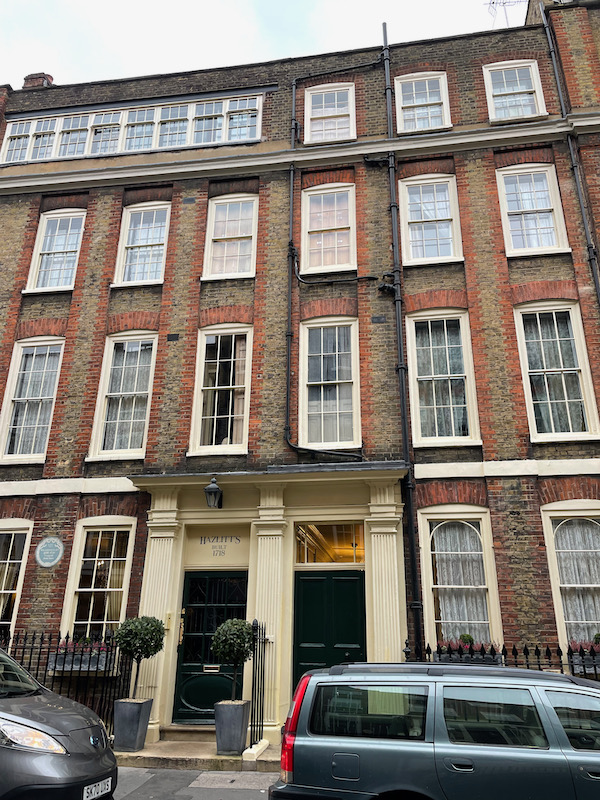
I always love the names of pubs in London ... so here is the Dog and Duck, with a nice blue-and-gold sign showing a hunting dog chasing a duck in the fields. It was built in 1897 and has a "listed" interior. Supposedly, Madonna, George Orwell, and the Prince and Princess of Wales have come here for a drink.


Meard Street has an interesting history ... supposedly prostitutes would scam their Johns out of money on this street by getting the money upfront and then telling them they forgot something that they need to go back to get. They would give them a key and tell them to go on inside and they will meet them there. Unfortunately, the key wouldn't work and the prostitute wouldn't come back. For a time, there was a sign on #7 that said "This is not a brothel, there are no prostitutes at this address" (although it has been removed now). But again, a really nice historical street.

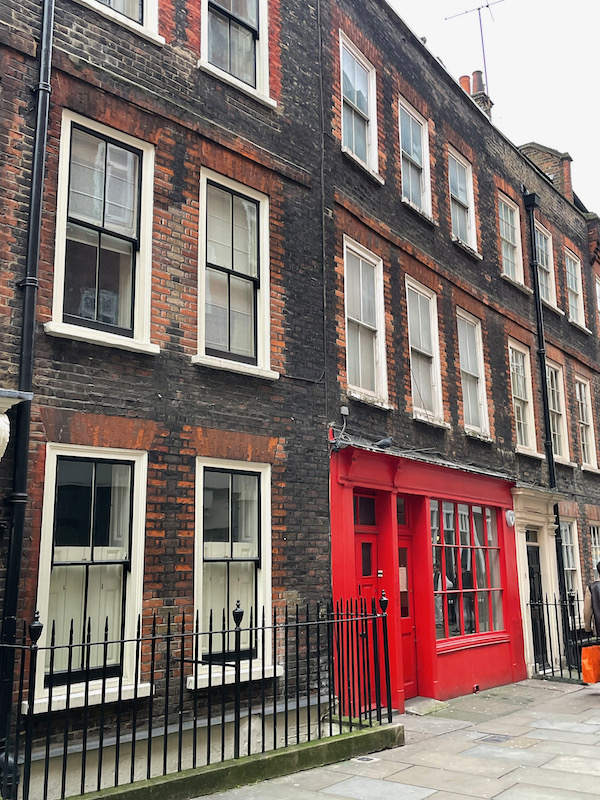
In 1854, there was a large Cholera outbreak, which at that time was thought to be spread through the air. A physician who lived nearby did a study of where people lived who died of Cholera and noticed an unnaturally large number of deaths from people who lived on Broad Street. He tracked down the cause of the outbreak to water from the public pump at the junction of Broad Street (now Broadwick Street) and Cambridge Street (now Lexington Street) where these people got their drinking water from. He persuaded the authorities to remove the handle of the pump, thus preventing any more of the infected water from being collected. The spring below the pump was later found to have been contaminated with sewage. A replica of the pump, with a memorial plaque and without a handle (to signify Snow's action to halt the outbreak) was erected in 1992 near the location of the original.

On the side of a building is a mural entitled "The Spirit of Soho", which as completed in 1991. It shows life in Soho including various people and landmarks. The clock is suppose to be animated with a couple things that happens on the hour, but it didn't move (perhaps it was too cold?).
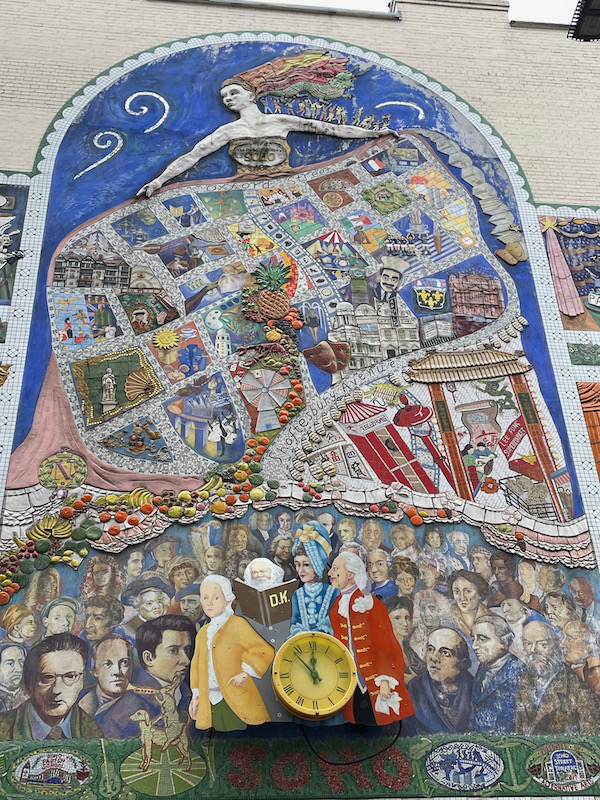
At the top is Saint Anne holding out her skirt, with Oxford Street running across the top, with people dancing don her arm.

Then we see Shaftsbury Avenue with Chinatown below it, theater district above it with the masks, and a casino along with fresh fruits, vegetables, and a lobster.
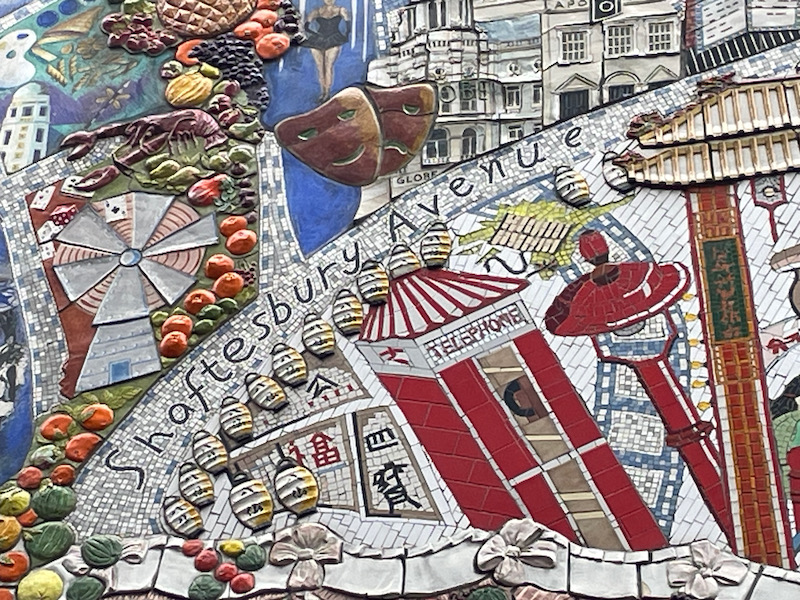

Also easy to find is Groucho Marx above the Apollo Theater.

This is one of the oddest pubs on our walk. The sign outside the pub claims the inn was established on the site in 1735 and was named after the owners, Thomas and John Shakespeare, who claimed to be distant relations of their famous namesake. The building itself dates only back to the late 19th century and you can see the mannequin gazing out of the window, looking down at the tourists that pass by.
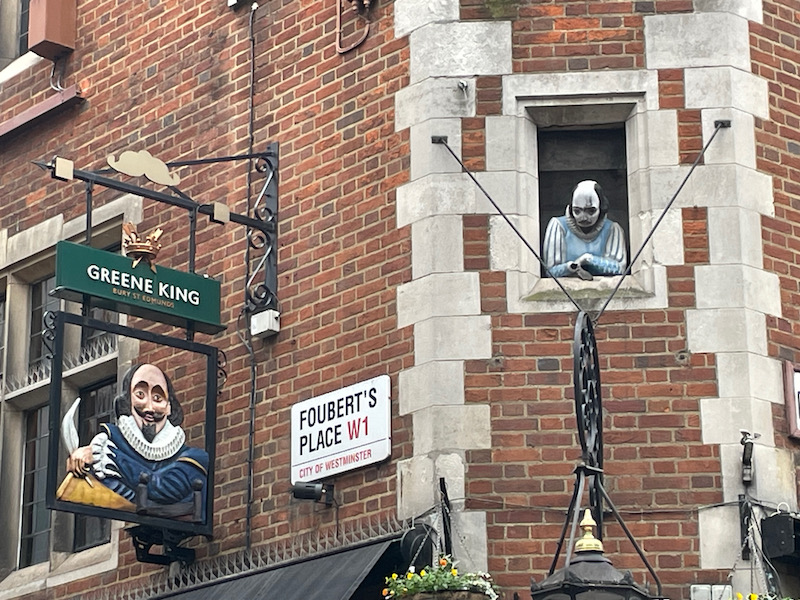
This looks like a medieval building, but it was built in the 1920's for the Liberty department store (which was doing business all the way back in 1875). The building was built from wood that came from 2 old Navy gunships. At the top is a golden ship (which looks like one of the 2 ships that was used for the building materials).
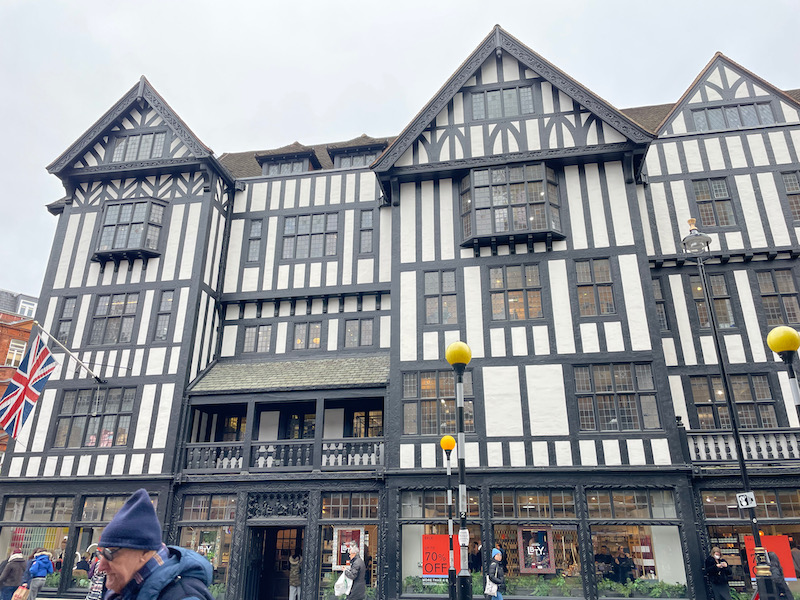
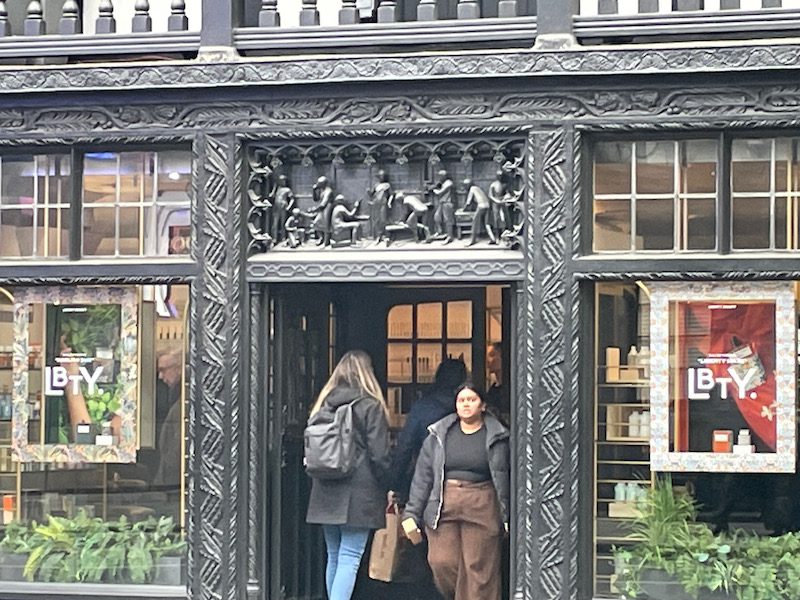
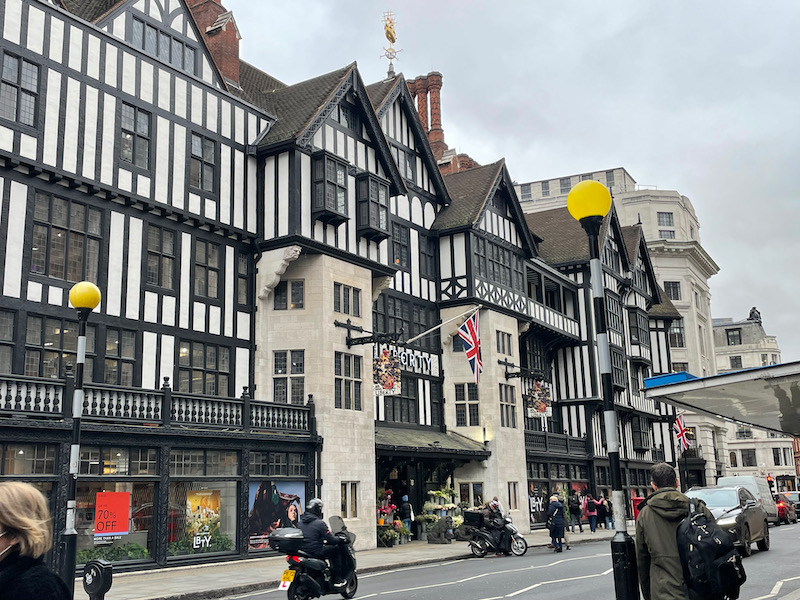
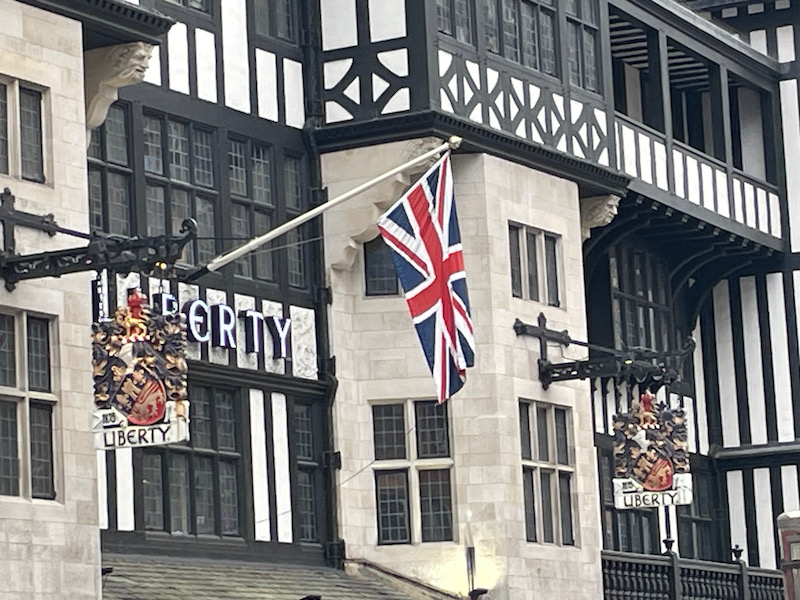

Then the Palladium theater, which is one of the most famous theaters in the world. It opened in 1910 and has feature a multitude of famous acts, as well as interesting other bits of trivia. Several "Live" albums were recorded here, including Bing Crosby and Marvin Gaye (both in 1976). Madonna performed at the Palladium in 2020. The climax of the 1935 Alfred Hitchcock spy thriller The 39 Steps was filmed at the Palladium. In 1941, an unexploded German parachute mine fell through the roof and had to be defused.
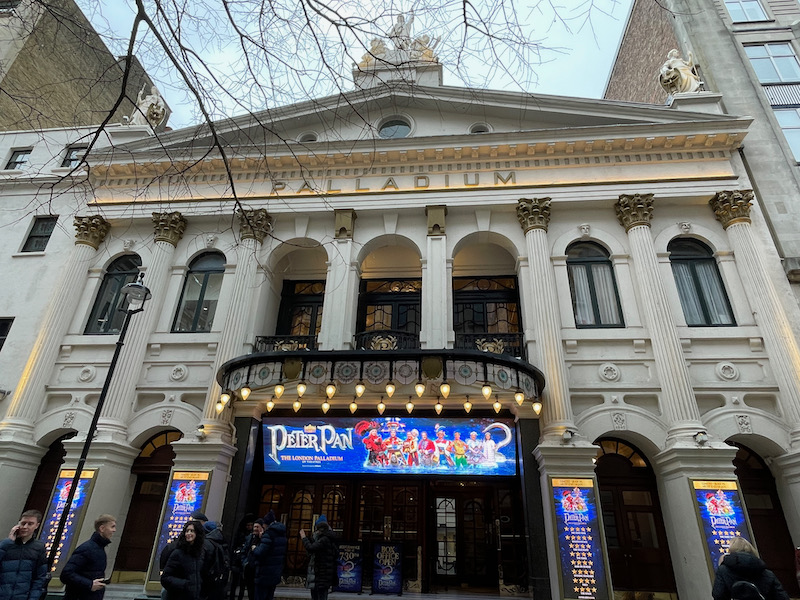

A bus ride across town to Kensington and Harrods. I was wondering what the building was before Harrods moved in, but, in fact, it was built by Harrods to be a department store. It is one of the largest and most famous department stores in the world and its motto, Omnia Omnibus Ubique, is Latin for "all things for all people, everywhere". While the company was started in 1824, this building was built between 1894 and 1905. They bought various other stores until around 1959, when Harrods itself was bought by a holding company, and then that holding company was bought by the Fayed brothers in 1985. They kept the store until 2010, when they sold it to the Qatar Investment Authority. We just peeked in for a few minutes, checking out the food halls and the Egyptian Escalators.

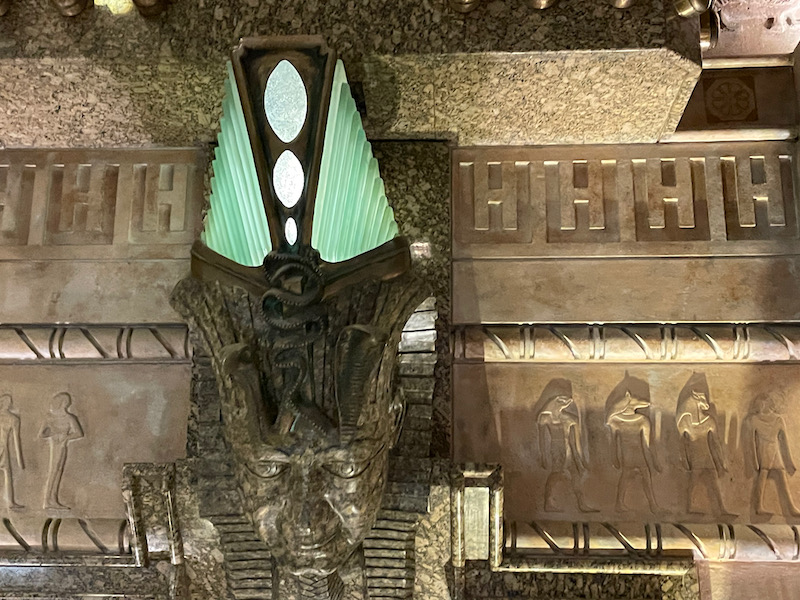
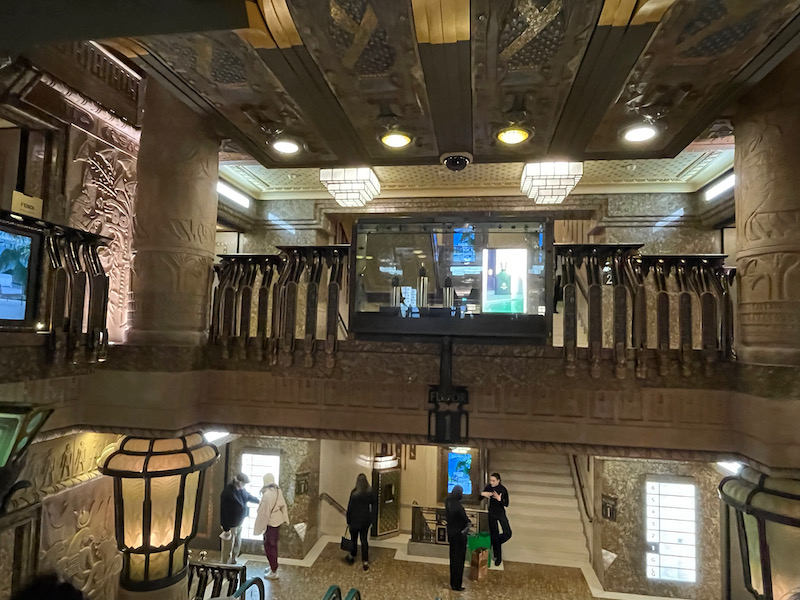
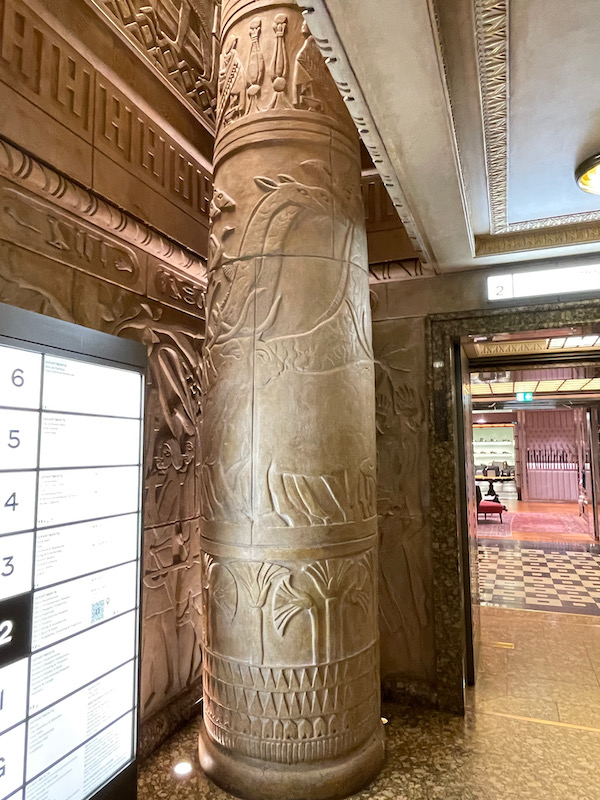
Just one picture of the architecture in that area of town, which you can compare to the Georgian houses we saw earlier.

One of our 2 plays for this trip, entitled "The Play That Goes Wrong". It is interesting because it is a play within a play, with the actors being part of a Drama Society who are putting on a performance of "The Murder at Haversham Manor" a 1920s murder mystery play. We decided to try the very front row for this show, which I thought was a great place. While you look up the entire time, it wasn't too difficult. Before the play starts the audience sees the backstage staff doing last-minute adjustments to the set, including trying to mend a broken mantelpiece and find a dog (named Winston) that has run off. Then during the show, well ... lets just say that things "go wrong" :-) I found it totally hilarious (Tom liked it but not as much as I did). If you are interested, you can also find it in NYC and *maybe* in a tour across the US, although the website wasn't working well for me to find out where. But here it is: https://broadwaygoeswrong.com/index.php.
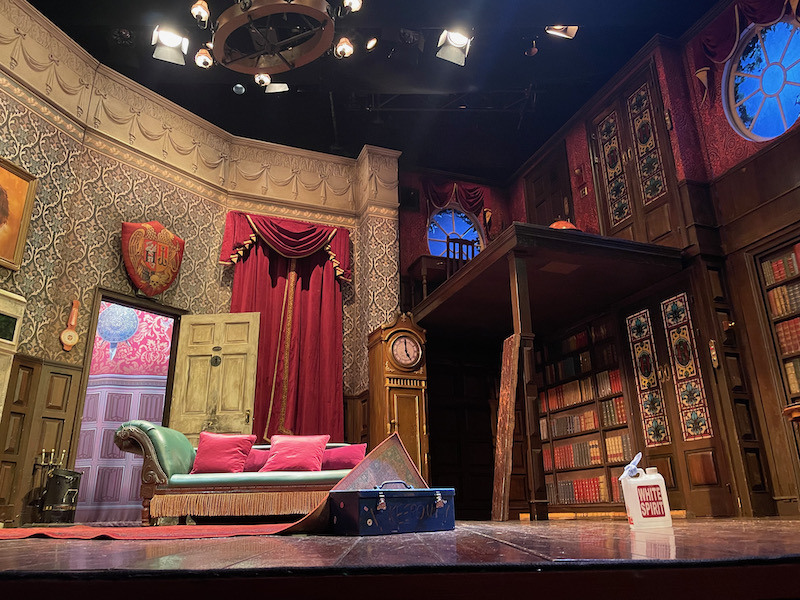

Then just a couple things on the walk back to our hotel. The first being the Royal Opera House along with the Paul Manly Hall (the large iron and glass atrium.
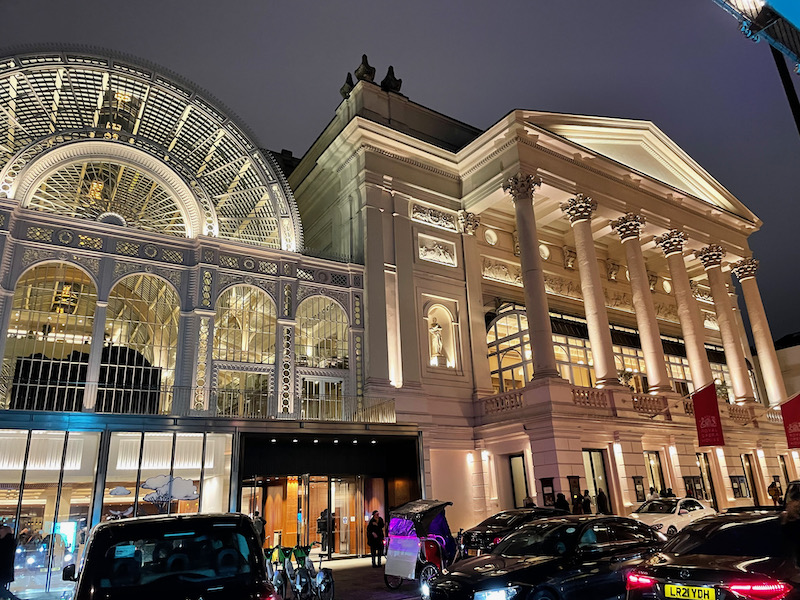

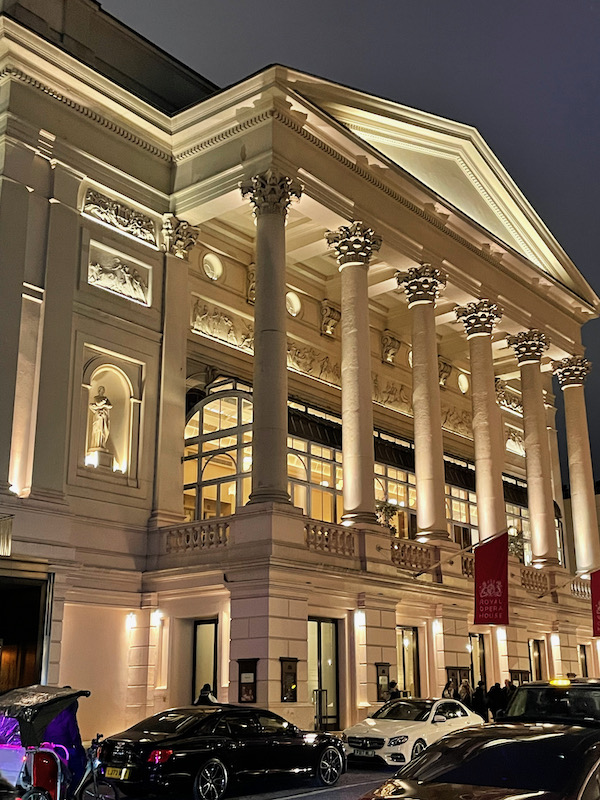
And from a nice building to something that is .. well .. just wrong. We saw LOTS of these tuktuk's, complete with fake fur and neon pink lights, waiting to whisk theater-goers home. Needless to say, the majority of them were outside of the musical "Mathilda" ... perhaps for the kids that went to the musical.
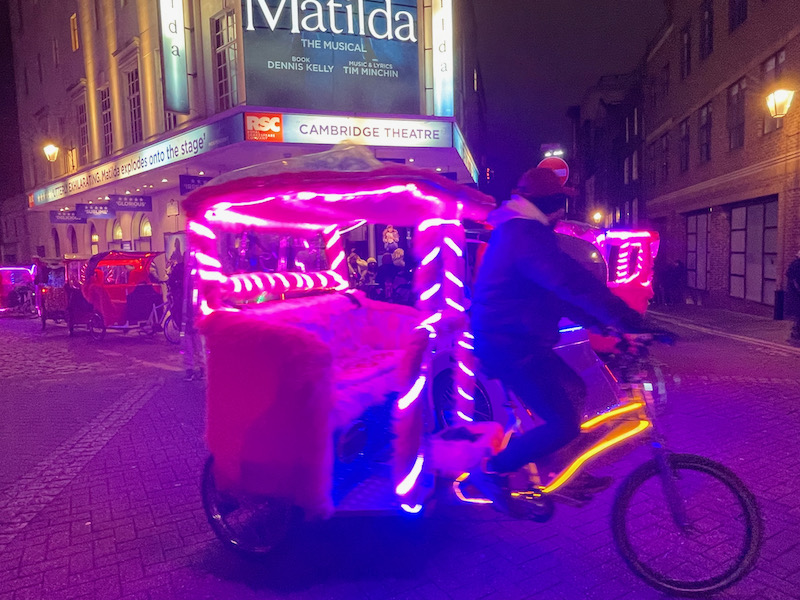
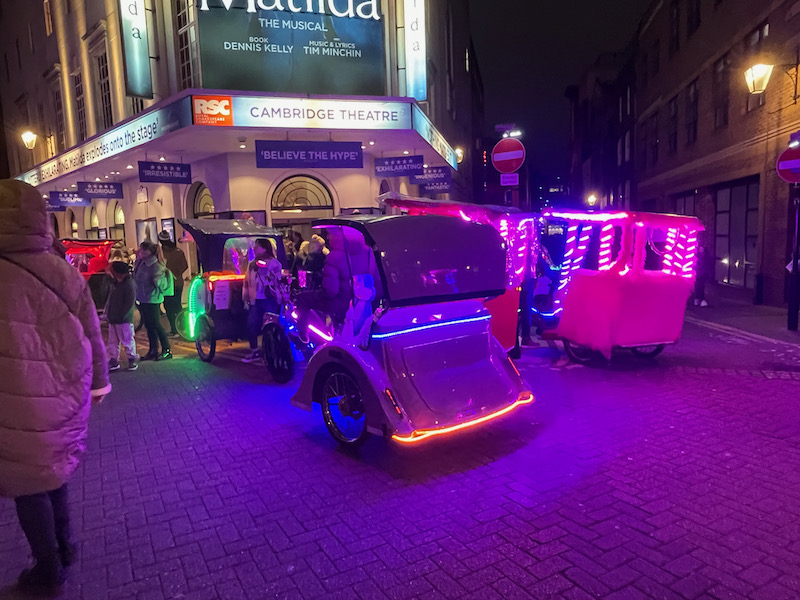
And finally ... the Palace Theatre is a HUGE Victorian redbrick theatre. It was designed to host operas and was opened in 1891 with a lavish production of Ivanhoe. It was changed to host long-running plays and musicals in the early 1900's and it is currently hosting the play "Harry Potter and the Cursed Child". Coming up on the theater at night, with it all lit-up ... it looks like it truly belongs in the world of Harry Potter!
